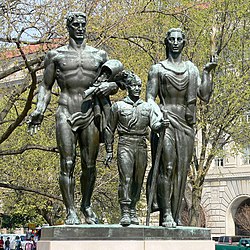| Scouting in Washington, D.C. | |||
|---|---|---|---|
 Boy Scout Memorial in President's Park | |||
 | |||
Scouting in Washington, D.C. (District of Columbia) has a long history, from the 1910s to the present day, serving thousands of youth in programs that suit the environment in which they live.
